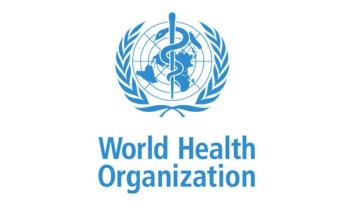
Statistical Weighting Helps Reduce Bias in Observational Studies
Pranita Tamma, MD, MHS, continues her conversation about a study she was involved in that compared ceftolozane-tazobactam and ceftazidime-avibactam. She discusses the usage of inverse probability weighting with propensity scores to balance patient groups and limit bias.
Episodes in this series

In this short series with Pranita Tamma, MD, MHS, associate professor of pediatrics in the Division of Pediatric Infectious Diseases at The Johns Hopkins University School of Medicine, she has a discussion about ceftolozane-tazobactam vs ceftazidime-avibactam for gram-negative resistant Pseudomonas aeruginosa infections and the latest data supporting these decisions.
In one retrospective observational study, which compared ceftolozane-tazobactam and ceftazidime-avibactam and was funded by the National Institutes of Health, the findings showed similar 30-day mortality rates but higher resistance emergence in the ceftolozane-tazobactam group (38% vs 25%). Tamma was the senior investigator in this trial.
Below is a response from a conversation with her about this trial.
Contagion: How did the use of inverse probability weighting and propensity scores strengthen the validity of the study’s findings?
Pranita Tamma, MD, MHS: Because the study we conducted is observational, there will always be some bias we can’t control. In an ideal world, we’d run a randomized clinical trial, where patients have an equal likelihood of receiving ceftolozane-tazobactam or ceftazidime-avibactam. With observational studies, we do our best: We collect data on severity of illness, age, comorbidities, source of infection, and other factors, and we try to balance these variables as much as possible.
In the end, we’re left with 2 groups of patients who are similar in all measurable characteristics that could affect clinical outcomes, except for the drug they received. There are several ways to achieve this balance in observational studies, though none is as rigorous as a clinical trial.
One approach is traditional logistic regression. Another is matching patients on key variables, though you can never match on everything, which is a limitation. A third is propensity score analysis, which adjusts for variables that might influence the choice of one drug over another.
In our study, we used a specific method called inverse probability of weighting with a propensity score. The propensity score represents the probability—based on variables like age, severity of illness, or transplant status—that a patient would receive one drug vs the other.
Here’s an example: imagine a study of gram-negative bloodstream infections comparing 7-day vs 14-day antibiotic courses. In an observational setting, patients receiving the longer course are often sicker—perhaps with a complex infection source or immunocompromise—while the shorter-course group tends to be healthier. That’s bias.
Propensity score weighting helps adjust for this. For instance, if I were 75 years old, had a liver transplant, was in the ICU [intensive care unit] on vasopressors, and received only 7 days of therapy, I’d be overrepresented in the short-course group. The software would weight me more heavily—maybe counting me as 2.5 patients—because my profile is rare in that group. Conversely, in the prolonged-course group, where many patients look like me, I might count as only half a patient.
By using inverse probability weighting with propensity scores, we aim to make the 2 groups more comparable so the main difference between them is the treatment they received. Of course, residual confounding and limitations always remain, no matter the method, but we felt this was the best approach to reduce bias in drug selection.
The conversation was edited for grammar and clarity.
Newsletter
Stay ahead of emerging infectious disease threats with expert insights and breaking research. Subscribe now to get updates delivered straight to your inbox.






